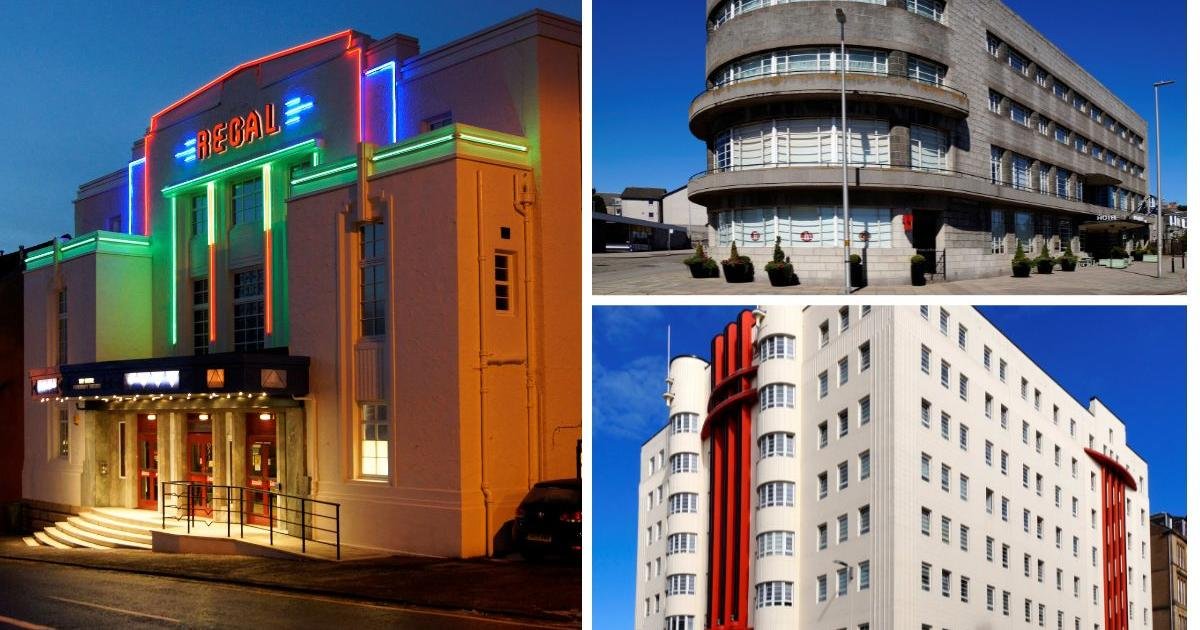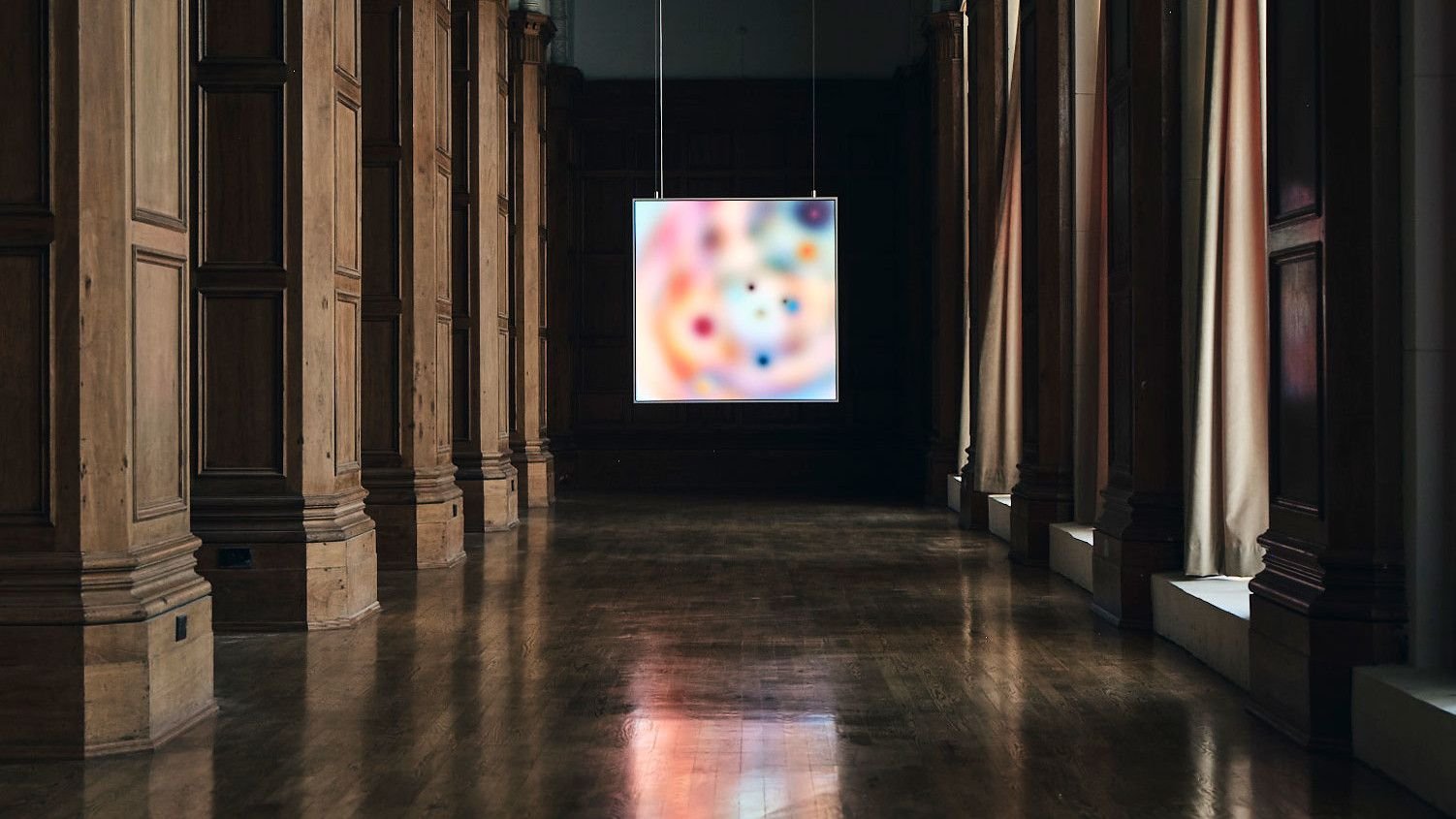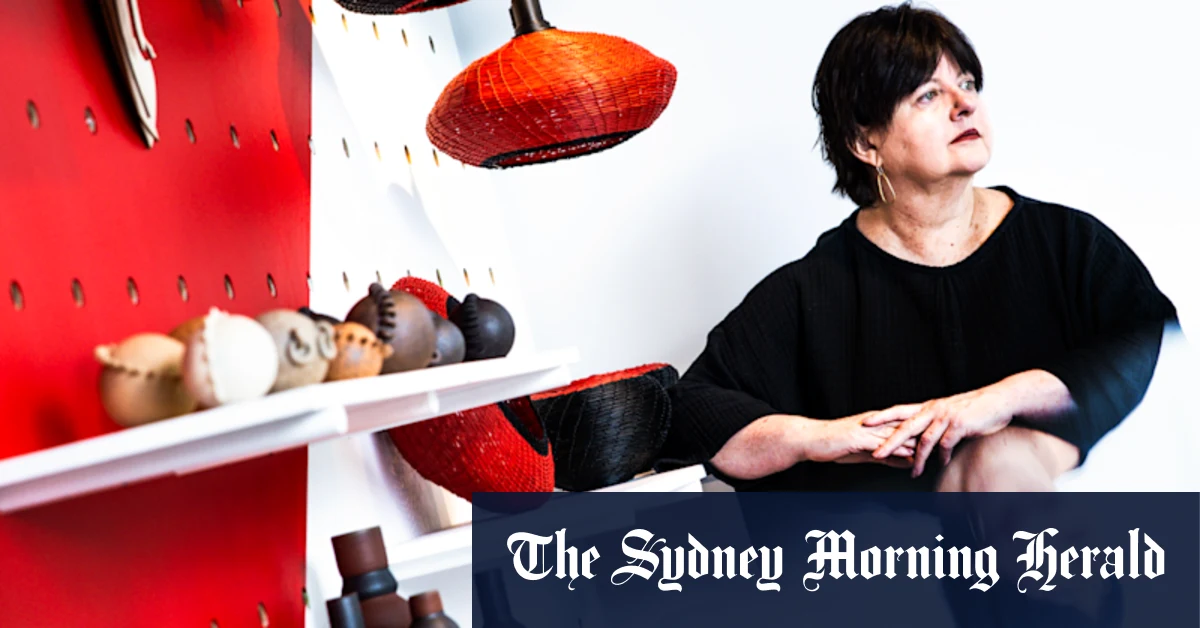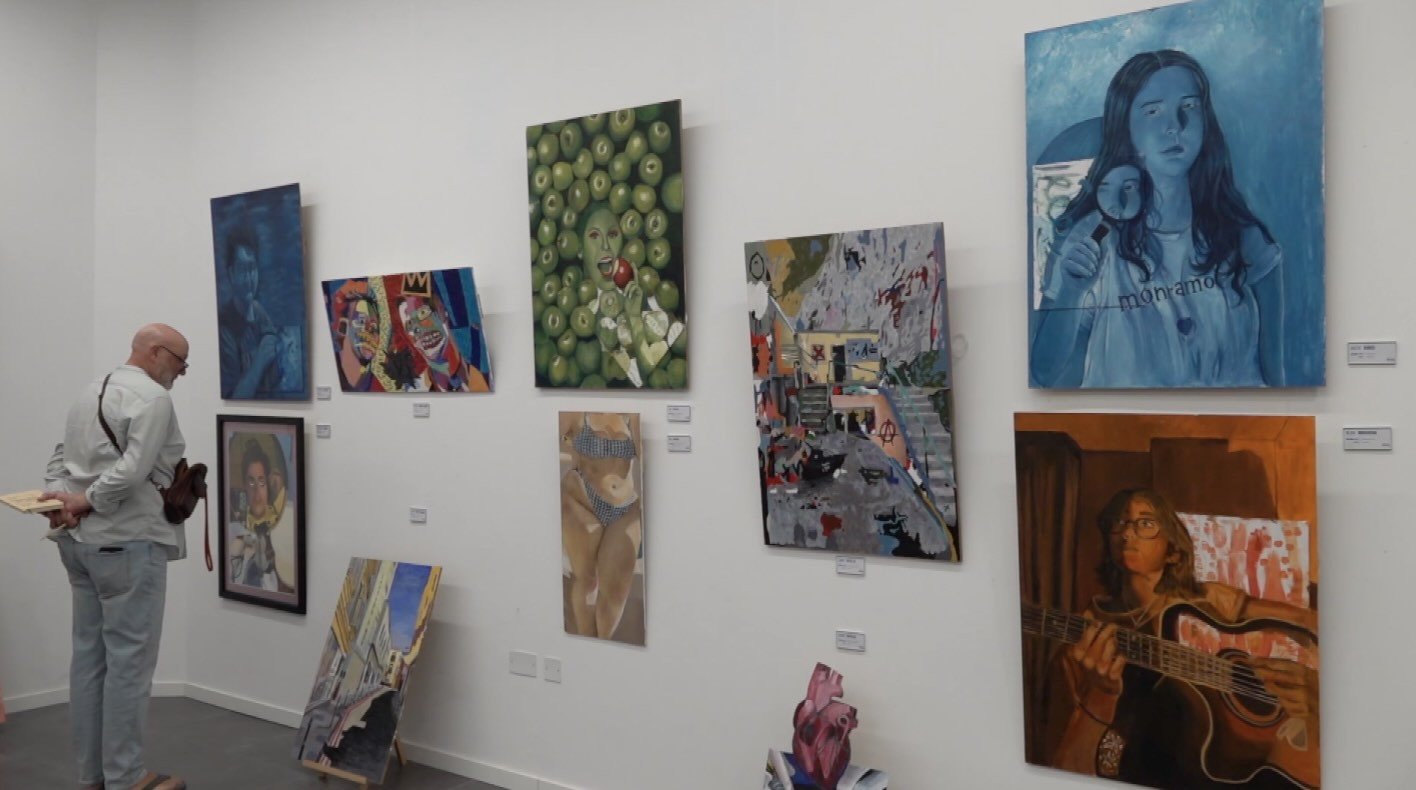Even though the practicalities of a flat roof or Vitrolite tile shop front on a rain-splattered Glasgow street made it an unlikely romance, Scotland in the interwar years became the canvas for a style more often associated with sun-drenched Miami boulevards and the shimmering skylines of New York.
Now a new book by Bruce Peter, Professor of Design History at The Glasgow School of Art, has highlighted the scale of Scotland’s Art Deco romance, and sheds light on why the nation fell head over heels in love with it.

His book, which accompanies a major Art Deco exhibition at in the Reid Gallery Corridor at The Glasgow School of Art, coincides with the centenary of the 1925 Exposition Internationale des Arts Décoratifs et Industriels Modernes in Paris.
A showcase for modern architecture and avant-garde design – forward-looking after the misery of war – it brought the decorative together with new materials and technologies in a series of French and international displays of bold buildings, objects, furnishings and fashions.
It would be decades later before the term ‘Art Deco’ was coined by the Swiss-French architect, artist and theoretician Le Corbusier.
However, fallout from the exhibition in the French capital swept the globe and took Scotland along with it on a wave of new and exciting modern style.
To towns and cities of grim tenements, and Victorian and Edwardian emporium and factories came gleaming white buildings with facades of glass, and lavish cinemas that turned a night at the movies into a Hollywood-tinged event with their neon signage and glitzy interiors.
Read more by Sandra Dick:
In city suburbs, glossy villas appeared with curved windows, flat roofs and open balconies for occupants to sit out on while sipping on a Martini – or perhaps more likely, given the temperamental Scottish weather, a steaming hot cup of tea.
Right across the country, from Nardini’s Cafe and Ice Cream Parlour in Largs and the Rogano in Glasgow, to moderne-style pier buildings at Fort William, Mallaig, Tobermory, Port Ellen and Stornoway, to grand department stores in Sauchiehall Street and outdoor swimming pools at Portobello, Gourock and Stonehaven, architects embraced distinctive Art Deco style.

Some buildings were more imposing than others: Steps Bar in Glassford Street with its black Vitrolite with floral acid etched windows is at the opposite end of the spectrum to St Andrews House in Edinburgh.
Towering over the east end of the city’s Princes Street, beyond its austere exterior are Art Deco sculptures and clocks designed by its forward-looking architect, Thomas S. Tait.
The style even encompassed Scotland’s hydroelectric power stations and bridges. Symbols of Scotland’s engineering prowess, they were designed with a flair that softened their industrial function with sleek, modern lines.
Even colliery pithead baths where miners could wash off the grime of work, were given chic Art Deco designs.

At the same time stylish ocean liners with power and technology to match their new shape departed Clyde shipyards as floating Art Deco palaces often kitted out with Scottish-produced art, furniture and furnishings that echoed the new trend.
None was more impressive than the Blue Riband winning Cunard-White Star RMS Queen Mary, built by John Brown of Clydebank and packed with Art Deco interiors and furnishings, much of it produced in Scotland by companies like Wylie & Lochhead, McNeil Bros, A H McIntosh, Scott Morton, Donald Bros and James Templeton & Co.
As glamorous liners crossed the globe, travellers across Scotland boarded streamlined tramcars and buses that embraced the new style, sweeping them to destinations in carriages that seem futuristic even today. Railway posters echoed the style, showing the nation’s modern face to the world.

Scottish flair for producing textiles, carpets, linoleum and furniture – explored in detail in the new book – saw producers across the country turn their hands to the new style: even old-fashioned tenement flats and traditional properties could become a haven of Art Deco interior style.
Scotland – in particular Glasgow, with the vibrant School of Art and the influence of Charles Rennie Macintosh – became a hotbed for Art Deco designs.
Yet this was an unlikely romance. Why would a country with a northern maritime climate, belching chimneys and heavy industry, with buildings blackened by soot and shrouded in smog, produce such a large and diverse array of Art Deco stretching from the industrial heartlands to places like Peterhead, with its grand 1,500-seat Regal cinema, and Rothesay with its Pavilion?

According to Prof. Peter, part of Scotland’s fascination with Art Deco was down to the nation’s heavy industrial past, and a desire to be seen as embracing a new modern age.
As Scots looked towards a brighter future with electrical gadgets at home and new industries on the horizon, its strong engineering culture meant there was both a fascination for new technology and ambition not to be left behind in the grime of their industrial roots.
“Scottish industrialists saw the ‘up to date’ as synonymous with being successful,” he says. “If you were in any way involved in industry, you wanted to express that you were moving with the times.

“On top of that, in Scotland there was a strong sense of being an outward-looking and cosmopolitan nation.”
There was also a vibrant generation of Scottish architects and designers influenced by historic links to France – ground zero for this new modern style – and the 1904 appointment of the Parisian architect Eugène Bourdon as head of the Glasgow School of Architecture.
While they had one eye on France, its Beaux-Arts system and its Impressionist artists, the other was trained on the United States of America, with its towering skyscrapers.
Well-trained and well-travelled Scottish architects worked with clients who had also experienced the world’s cosmopolitan centres of style.
It combined to create a ‘lightbulb’ moment: Scots were more than ready to embrace this dramatic new style.
“There were all these influences which encouraged this type of modern work,” says Prof. Peter. “And there was a lot of it in Scotland.”
Built-up conurbations at the time were dark and dirty, with buildings blackened with soot from thousands of chimneys.
But this new aesthetic shone like a new pin.

Visitors to the 1938 Empire Exhibition at Bellahouston Park were greeted by the new style in all its glory: the Tower of Empire overlooking creamy coloured buildings made from new materials like asbestos cement, a ship-shaped Atlantic Restaurant and façades of curved glass and steel.
“The atmosphere here at the time was filthy in ways we can’t imagine. And this was an aesthetic that at the time had very broad appeal.
“This pastel-shaded environment with all the illuminated fountains… it was a totally different world.
“It opened up people to welcome possibilities of things being done differently and better, and the idea of cleanliness and bright colours.”
Also driving the craze was a new connectivity that enabled people to share trends and tap into what was happening in cosmopolitan centres like Chicago, New York and London.
Read more Sandra Dick:
“Talking movies and illustrated magazines made the general literate part of the public more aware of other ways of doing things in other places.
“They had an impression that things really ought to change.”
As the shift began, new buildings in Art Deco style – cinemas, dance halls, department stores, car dealerships, villas and even factories – sprang up.
“Given the climate in Scotland, there’s a tremendous number of art deco villas with flat roof villas, balconies and corner windows,” he adds.

“They look as if they should be in the Mediterranean, the south coast of England or one of the leafier suburbs of Los Angeles, but they’re in Bearsden, Newton Mearns, Kelso, Dundee, Broughty Ferry, Stranraer…
“Everywhere you go, you see another one.
“This new development was generally welcomed; it was a sign of progress and change.”
Industrial buildings also embraced the style, such as Scotland’s first modern industrial estate at Hillington, a unique project in the second half of the 1930s which used electricity rather than coal power, making it a beacon for a cleaner future.
A response to the impact of the Great Depression on Clydeside’s heavy engineering-based economy, it was intended to show a bright future away from the “dark Satanic mills” of the Industrial Revolution, looking towards new industries of pharmaceuticals, cosmetics and household goods.
The new book, Art Deco Scotland, includes more than 400 photographs and illustrations from the Historic Environment Scotland archives.

The accompanying exhibition, in the Reid Gallery Corridor at The Glasgow School of Art and part of events celebrating Glasgow’s 850th anniversary, will bring together images, ephemera, a film and textual interpretation covering Art Deco style in Scotland.
A key piece will be an animated 3D model of the Empire Exhibition, alongside examples of Scotland’s best-loved Art Deco buildings including Bathgate’s Regal Cinema and the Paramount Cinema, Glasgow.

Both the exhibition and book also highlight the impact of leading Scottish architects of the time, who didn’t just apply the style at home, they exported it.
Such as Sir John Burnet’s architecture firms in Glasgow and London, which played a pivotal role in defining the look of interwar London with designs for Adelaide House, the tallest building in the city at the time, Selfridges department store with its ornate entrance canopy, and Kodak House, with its American-style modern frontages.
They were so influential that they produced a detailing guide which was adopted by almost every other architectural firm.
As well as working with the practice and contributing to projects from New Zealand to Johannesburg, Paisley-born Thomas S. Tait, the creative force behind Adelaide House, was also involved in designing the Daily Telegraph building in Fleet Street, the grand portals of the Sydney Harbour Bridge and St Andrew’s House in Edinburgh.

Another key figure, Glasgow-trained James Steel Maitland, designer of Paisley’s Russell Institute, brought experience from his time in North America bringing international insight to his designs.
For all its glamour, however, Art Deco was not always practical in Scotland. Flat roofs, perfect for sun-drenched locales, were less suited to relentless drizzle, and architects often had to tweak designs to reflect the climate.
It also took a leap of faith for Scottish homemakers to swap heavy, and dark soft furnishings that hid fireplace soot for the brighter fabrics from the likes of Edinburgh Weavers, the funky linoleum of Kirkcaldy’s Michael Nairn & Co, and Templeton’s abstract carpet designs.

But while Art Deco thrived in the new electric age, Scotland’s love affair with it would eventually be swamped by new trends. Buildings which once dazzled in grim city streets lost their shine. More often than not, they were eventually demolished.
Some survivors are being coaxed back to life: Rothesay Pavilion, closed since 2015, recently received final funding to help restore it to past glory.
Others, like the former Leyland Motor Co. building in Glasgow’s Salkeld Street, languish on the Buildings at Risk Register.

Prof. Peter hopes by shining new light on Scotland’s Art Deco romance what’s left can be better appreciated and protected for future generations to admire.
“One of the things that I find utterly vexing at the moment is the terrible neglect of so many of our great buildings, particularly in Glasgow but also in other places,” he adds.
“I hope the book will draw attention to the great work that the body of Scottish architecture represents.”
Art Deco Scotland: Design And Architecture In The Jazz Age by Bruce Peter is published by Historic Environment Scotland. An accompanying exhibition of the same name runs from 5 – 28 April at Reid Ground Floor Corridor, Glasgow School of Art.







